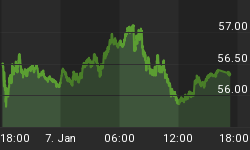We had a choppy week in bond-land as liquidity started to dry up as the week wore on. The Fed obliged and raised rates as expected by 25 basis points on Tuesday with no immediate reaction from the bond market. Other than the fact that economic data continuing to be somewhat schizophrenic, there were 2 developments of note: oil and bonds decoupled (in the recent past oil and bonds moved up and down in tandem, but last week oil was up considerably while bonds sold off), and the Baltic freight index declined over 20% in 2 weeks. In the meantime, VIX just set a new 9-year low. Some things are volatile and others are not. I suppose same holds true for the bond market, as the 10-year yield is pretty much unchanged on the year, while overnight is up 125% and counting. The yield curve has more room to flatten, in spite of what the experts say. Or perhaps because of it. I would think it would be wise to allow a few more months to see the effect of rising short rates on the economy. For the time being the stock market says the glass is half full, while bonds are telling us the glass is half empty.
NOTEWORTHY: The economic data was mixed to positive last week. The data on the employment front was divergent: major layoff announcements continue unabated - add Cardinal Health, Merck, ABN Amro, AMEX to the dozens on major companies that announced plans to lay off employees by the thousands, while Weekly Claims declined 43k to emphatically reverse a weakening trend there. At the same time consumer confidence surveys continue to rebound as stocks set new highs for the year. The normally buoyant housing sector showed surprising weakness as Housing Starts fell 13% in November. The inflation data (CPI) was on expectations in the US, while Canada reported higher than expected inflation, which had a negative impact on the short-term maturities there. At the same time Canadian 10-year notes outperformed the US 10-years last week. Canada faces some strong headwinds as long as a result of the Canadian dollar moving through 80 cents. Canadians will need to come up with some new tricks - other than resources - in order to keep their economy and social programs competitive with the US. Next week is going to be short and with decreased liquidity and little in the way of major data releases, the choppy action is likely to continue.
INFLUENCES: Fixed income portfolio managers are staying record bearish last week (RT survey steady at 38% bullish for the 3rd week in a row, matching the lowest level in 15 years). I just can't turn outright bearish until this sentiment measure becomes less extreme (i.e. supportive). Specs increased their long position another 27k to a somewhat negative +49k. Bonds continue to trade well and the longer-term chart remains constructive. Seasonals are positive.
RATES: US Long Bond futures closed at 112-11, down 3/8 last week, while the yield on the US 10 year bond rose 5 basis points to 4.20% after trading as low as 4.07 early in the week. I expect the long end to continue to see solid support. During holiday periods due to the lack of liquidity, strange things can happen and moves can be exacerbated. The pain trade is up. The Canada - US 10 year spread moved in 4 to 12 basis points. Buying Canadian 10 year bonds to sell US 10 year notes and pick up 50 basis points was recommended in late September and taking profits was recommended 2 weeks ago when the spread was trading in single digits. While the bulk of this move has already transpired, I still believe Canadian bonds are on the cheap side relative to the US 10 year bonds. The front end in the US was heavier than Canada last week. Dec05 BA futures closed the week 46 basis points through Dec05 EuroDollar futures, which was 7 basis points wider than last week's close. It makes sense to sell BAZ5 to buy EDZ5 north of 40. The belly of the Canadian curve was stable to the wings last week, but the belly is still cheap. Selling Canada 3% 12/2005 and Canada 5.75% 6/2033 to buy Canada 6% 6/2011 is at a pick-up of 60 basis points. As the curve continues to flatten, the belly should continue to outperform. Assuming an unchanged curve, considering a 3-month time horizon, the total return for the Canada bond maturing in 2012 is the best value on the curve.
CORPORATES: Corporate bond spreads were well supported last week. The buy side is way long this sector. Long TransCanada Pipeline bonds were in 3 basis points to 110, while long Ontario bonds were .5 tighter to 45.0. A starter short in TRAPs was recommended at 102 back in February. Credit spreads are excessively tight and the appetite for risk in the bond market seems to be insatiable at this point. There are a number of good reasons for this, but I believe that it will not go on indefinitely.
BOTTOM LINE: I remain positive on bonds. With an ongoing slowdown not properly priced, I believe the front end is cheap in the US. An overweight position in the belly of the curve is still recommended. Short exposure for the corporate sector was advised since February. Long Canada - Short US 10 year position was established at +50. It is recommended that this position be covered on strength to even yield.
GENERAL COMMENTS: I plan to take a break over the holidays and do a review of the 2004 performance of my recommendations early in the New Year. I would like to take this opportunity to wish Happy Holidays and a Prosperous New Year to all.
















